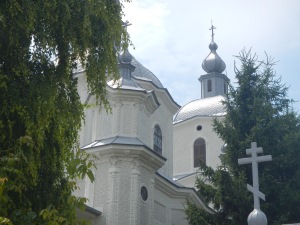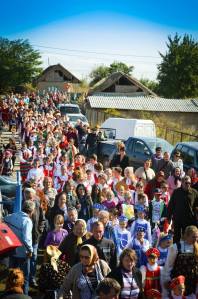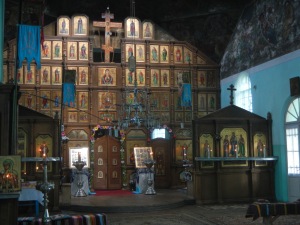by Cristina Clopot
‘What is the future of the past?’ asked Christina Cameron, a prominent researcher within heritage studies, and she was not the only researcher to ponder on this question. An increased awareness of the richness of past inheritance is not directly linked with recipes to take these forward to be enjoyed by the next generation and to counteract globalisation backlash. Moving the discussion beyond internationally recognised ‘items’, with the trademark of ‘Outstanding Universal Value’, towards smaller communities, the question becomes even more intricate. It is in this precise small area dealing with the heritage of small-scale, minority communities that Cristina Clopot’s research fits in. And the question mentioned at the beginning of the article is central to Cristina’s PhD project centred on Russian Old Believers in Romania.
Old Believers have migrated from Russia in the XVIIth century to escape religious persecutions. They opposed the religious transformations of the Russian Orthodox Church insisting on keeping their centuries-old belief. Old Believers communities exist throughout the world (in places such as Canada, the U.S., New Zealand, Lithuania, Latvia, Estonia), however, Cristina’s research is focused on Romania. A small community of about 23,000 people, the Old Believers (Lipovans as they are called in Romania and Moldova) represent one of the 18 officially recognized ethnic groups within the country.
In a country marked by increased globalisation and rapid transformations in the post-socialist period this community has managed to preserve its rich cultural heritage.
Cristina’s research thus engages with Lipovan heritage, both tangible and intangible. The two types of heritage are in a ‘symbiotic relationship’, as an UNESCO representative pointed out. Themes such as continuity and innovation, authenticity or sustainability will be explored within this project through ethnographic methods. The research project is supervised by Prof. Máiréad Nic Craith, Chair of European Culture and Heritage and Prof. Ullrich Kockel, Professor of Culture and Economy, and fieldwork is carried with the help of Estella Cranziani Post-Graduate Bursary for Research.
Old Believers Church (image taken by the author)
Part of Old Believers’ tangible heritage, churches, with arched domes and 8 cornered crosses exist in different areas of Romania, predominating however, in the eastern side of the country, where large communities of Lipovans reside. Old Belief is a form of Orthodoxy, close to the Greek form of Orthodoxy, yet with essential differences: e.g. different way of crossing, or the use of Slavonic. Religion is still important for the community today as reflected by the numerous icons encountered in diverse houses and locations I have visited in Romania.
Clothing is another distinct element of their heritage. Once worn every day, traditional dressing is now mostly seen in religious services. The shirt (‘rubashka’) tied with a braid (‘pois’) or the colourful long skirts worn by women are part of the specific landscape in an Old Believer community.
Borsch festival within a community of Old Believers in Romania (Source: Jurilovca village Facebook page)
Apart from crafts related to clothing, boats or house building, iconography is another axial craft within the community. Icons play a central role for the practice of Orthodoxy, acting as messengers between believers and the ‘divine prototype’ they represent. Lipovans have carried this craft from Russia with them and have passed it on from generation to generation.
Image from an Old Believers Church (taken by the author)
‘What is the future of the past?’ remains thus an open question for this community and an interesting challenge to answer within this research project.



